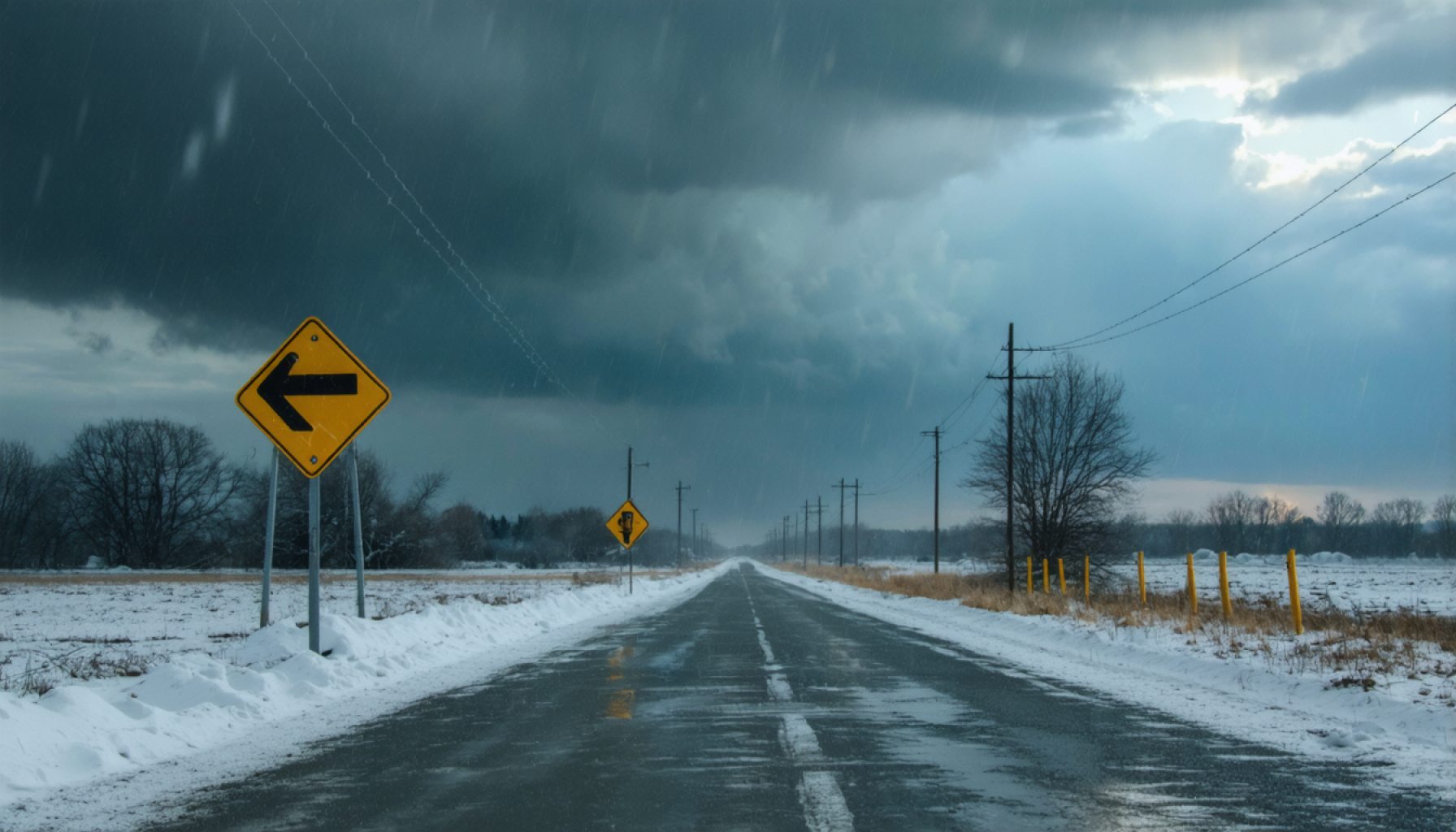
This image was generated using artificial intelligence. It does not depict a real situation and is not official material from any brand or person. If you feel that a photo is inappropriate and we should change it please contact us.
AI and Winter Storms! New Tech Revolutionizing Warnings
- AI-driven forecasting tools enhance accuracy and timeliness of winter storm warnings.
- Technology utilizes large datasets like satellite imagery and historical records for precise predictions.
- Hyper-local weather alerts allow for targeted warnings, improving community preparedness.
- Integration with IoT devices ensures quick response, such as adjusting home systems during alerts.
- The advancements promise enhanced safety and better resource allocation during severe weather events.
As winter approaches, advanced technology is stepping up to revolutionize how we respond to winter storm warnings. In a breakthrough merging climate science and artificial intelligence, AI-driven forecasting tools are setting a new standard for accuracy and timeliness. These tools are designed to adapt to evolving patterns of unpredictable weather systems, providing insights that were unimaginable just a few years ago.
AI Forecasting Models are utilizing vast datasets, including satellite imagery and historical weather records, to generate more precise predictions. Traditional methods relied primarily on numerical weather prediction models, but now AI can analyze and learn from immense amounts of data in real-time, spotting emerging trends faster and more accurately.
One of the most exciting aspects of this technological advancement is the potential for hyper-local weather alerts. Current systems often provide widespread warnings that may only apply to certain regions within an area. New AI technologies can pinpoint specific locales at risk, allowing for targeted alerts and enabling communities to prepare more effectively.
Moreover, integrating this cutting-edge technology with IoT devices ensures that essential alerts are delivered faster. Smart home systems can now be programmed to respond to these warnings by adjusting thermostats or activating emergency plans.
As these innovations continue to develop, the future of winter storm warnings promises to offer enhanced safety measures and better resource allocation, significantly mitigating the impact of these severe weather events on our communities. The marriage of AI and meteorology is not just a forecast but a bright outlook for the future.
The Cold Truth: How AI and IoT Are Revolutionizing Winter Storm Responses!
Leveraging AI for Unmatched Weather Accuracy
As we brace ourselves for the icy grip of winter, the intersection of artificial intelligence and IoT technology is redefining how we interpret and respond to winter storm warnings. Transitioning from conventional numerical models to AI-driven tools, weather forecasting is becoming more precise and timely, helping save lives and resources. Here are the crucial facets you need to know:
Major Innovations in AI Forecasting
1. Hyper-Local Weather Alerts
By tapping into vast datasets—from satellite imagery to historical climate records—AI tools now provide hyper-local weather alerts. Unlike traditional warnings, which often cover large areas, these pinpoint precision alerts mean that specific communities can prepare more effectively. This advancement not only emphasizes accuracy but also improves community readiness and response times.
2. IoT Integration for Immediate Action
Modern IoT devices, such as smart home systems, are seamlessly integrating with AI-based forecasting models. This integration ensures the immediate delivery of alerts and allows for automatic responses like adjusting thermostats or activating safety protocols. The result is a quicker, more coordinated defense against impending weather threats.
3. Enhanced Resources and Safety Measures
AI technology is fundamentally enhancing our approach to winter preparedness. By predicting storm severity with greater accuracy, AI helps to allocate resources more efficiently, mitigate impacts, and enhance public safety. The future of winter storm warnings is indeed a proactive rather than reactive one.
Key Questions Answered
Q1: How does AI improve the accuracy of weather predictions?
A1: AI enhances weather predictions through the processing and analysis of enormous datasets, including satellite images and historical weather data. These AI systems can learn from past patterns and identify emerging ones in real-time, offering a much higher degree of accuracy than traditional models. This leap in precision is crucial, especially in forecasting unpredictable weather systems.
Q2: What role do IoT devices play in winter storm response?
A2: IoT devices act as the frontline receivers of AI-generated weather alerts. By integrating with smart technologies, IoT devices such as smart thermostats and emergency systems can respond immediately to threats. They help ensure that those who are vulnerable receive timely notifications, and they automate protective measures within homes, increasing safety during storms.
Q3: What are the potential limitations of AI in weather forecasting?
A3: Despite the advancements, AI forecasting tools have limitations, such as data dependency and the need for continuous learning algorithms to adapt to completely new weather phenomena. Additionally, there is a risk of over-reliance, where human judgment may be sidelined despite having nuanced insights that AI might miss.
For further insights into how these technologies are shaping the future, you may visit trusted sources like NOAA and The Weather Channel. These platforms offer comprehensive analyses and updates on ongoing innovations in the field of meteorology.
By embracing these technological strides, communities worldwide can transform their responses to winter storms, prioritizing accuracy, rapid response, and safety like never before.
Comments (0)